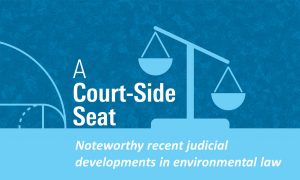Making good on a promise to redefine the Clean Water Act (CWA) term, “Waters of the United States” or WOTUS, on January 18, 2023, the latest revised definition of “Waters of the United States” was published in the Federal Register by the U.S. Army Corps of Engineers (ACOE) and the Environmental Protection Agency (EPA) at 86 FR 3004. The effective date of this rule was on March 20, 2023. Remarkably, this action marks the fourth time in eight years that these agencies have attempted to craft a workable definition of WOTUS and thereby affect far-ranging impacts on everything from infrastructure and agriculture to private land use. While the agencies indicate that the newly redefined WOTUS is, in many ways, a return to the longstanding regulatory regime, there are several notable changes.
Read more in Seeking Certainty: Redefining “Waters of the United States” by Anthony B. Cavender and Ashleigh Myers.
 Gravel2Gavel Construction & Real Estate Law Blog
Gravel2Gavel Construction & Real Estate Law Blog



